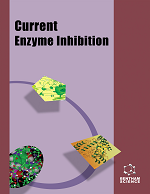-
oa Editorial [Hot topic: TGF-β Signaling and its Inhibition: Implication in Fibrosis (Guest Editor: Asish K. Ghosh)]
- Source: Current Enzyme Inhibition, Volume 6, Issue 2, Jul 2010, p. 54 - 56
-
- 01 Jul 2010
Abstract
This special issue of Current Enzyme Inhibition (CEI) entitled “TGF-β Signaling and its Inhibition: Implication in Fibrosis” is comprised of five informative review articles describing the significance of Transforming growth factor-β (TGF-β) in tissue fibrosis. Fibrosis, a devastating connective tissue disorder, is characterized by vascular injury, inflammation, profibrotic cytokine secretion by infiltrating cells, fibroblast activation, myofibroblast differentiation, excessive collagen and other extracellular matrix protein synthesis and accumulation, loss of tissue homeostasis and ultimately, impaired organ function. As fibrosis is associated with differet diseases in different organs, millions of people are affected by this connective tissue disorder every year. At present, there is no effective treatment for the reversal of fibrosis. In order to develop novel therapeutic approaches for the treatment of fibrosis in different organs, numerous studies have been performed in vitro using cultured cells and in vivo using animal models of fibrosis and patients with tissue fibrosis. Irrespective of fibrotic organs, one common concept emerges from these studies-TGF-β plays a pivotal role in the development of tissue fibrosis. In most fibrotic tissues, TGF-β levels are elevated and neutralization of elevated TGF-β activity ameliorates progression of fibrosis. As TGF-β also plays a significant role in controlling cellular growth and immunity, complete neutralization or depletion of TGF-β will not be an ideal approach to treat fibrosis. Therefore, it is important to understand the downstream events and its major players in TGF-β signal transduction pathway which control fibroblast activation, myofibroblast differentiation from resident fibroblasts or EMT/EndMT-derived fibroblasts and synthesis of ECM proteins. In the last decade, extensive research has been conducted to better understand the molecular basis of tissue fibrosis particularly in light of profibrotic cytokine TGF-β signaling. Understanding the molecular basis of tissue specific fibrosis will be beneficial in designing new therapeutic approaches to treat tissue specific fibrosis. Numerous pharmacological, natural and cellular inhibitors of TGF-β signaling have been tested to block tissue fibrosis in different organs. The primary goal of this special issue of CEI is to give readers a very comprehensive review of the progress of fibrosis research in different organs and possible therapeutic approaches. Although every organ in the human body can be affected by fibrosis, this special issue of CEI specifically covers the pathogenesis of fibrosis and its direct association to the multifaceted nature of TGF-β signaling in liver, lung, heart, kidney and skin. The first article by Matsuzaki has described the clinical features of human liver fibrosis and the role of Smad-dependent TGF-β signaling in the pathogenesis of liver fibrosis. This article elegantly described the significance of site specific phosphorylation of Smad3 [C-terminally phosphorylated form, linker phosphorylated form and both C-terminal and linker phosphorylated form] by TGF-β receptor I kinase, cyclin-dependent kinase 4 and c-Jun N-terminal kinase in cytostatic and fibrogenic TGF-β signals in hepatocytes and mesenchymal cells. The importance of specific blockade of c-Jun N-terminal kinase-dependent Smad linker phosphorylation in the treatment of liver fibrosis has been discussed. In second article, Yue, Shan and Lasky have reviewed the significance of TGF-β signaling in the pathogenesis of pulmonary fibrosis in light of epithelial-to-mesenchymal transition (EMT), myofibroblast differentiation and excessive collagen and other ECM proteins accumulation. Authors discuss the molecular basis of TGF-β activation by a number of mediators and its significance in lung fibrosis. The significance of proteoglycans and histone deacetylases in TGF-β-induced myofibroblast differentiation and fibrosis has also been discussed. In this article, Lasky and colleagues also summarized the present standing of various clinical trials for treatment of pulmonary fibrosis. The third article by Ellmers has reviewed the role of TGF-β signaling in cardiac fibrosis.The significance of Smad and non-Smad pathways as well as Renin-angiotensin system (RAS) in TGF-β signaling and in the development of cardiac fibrosis has been described....


